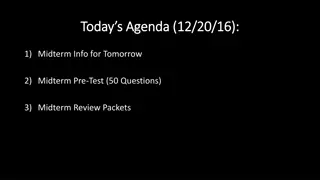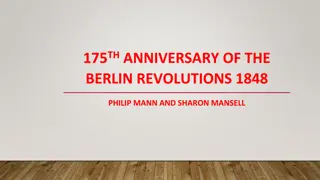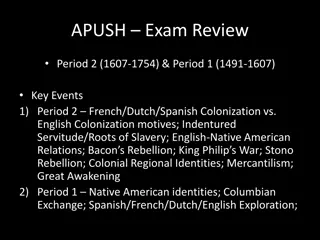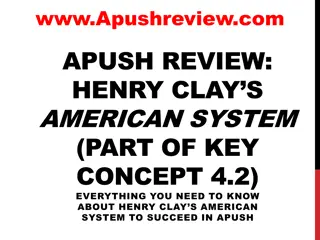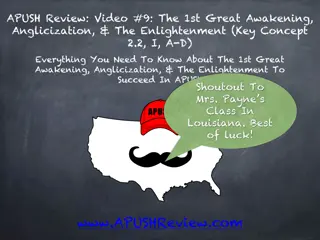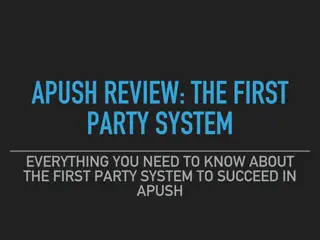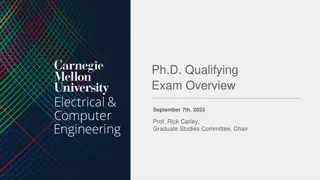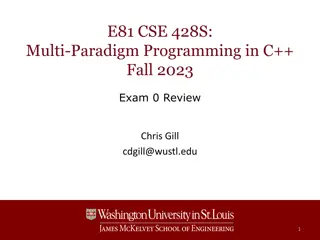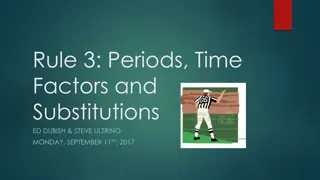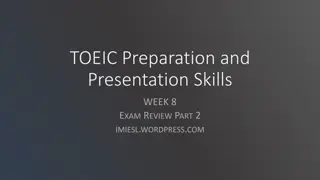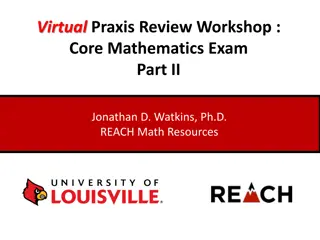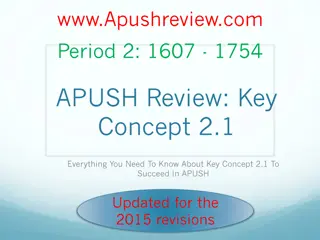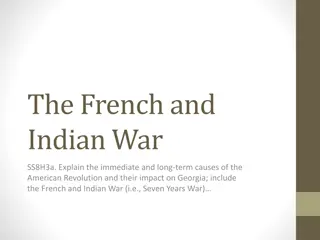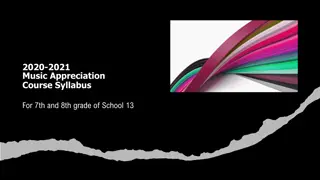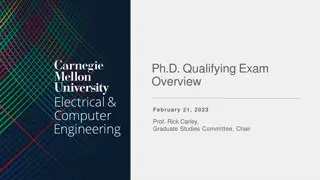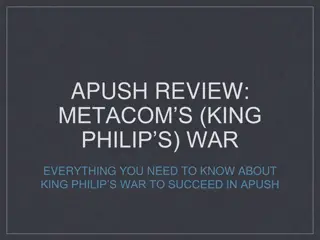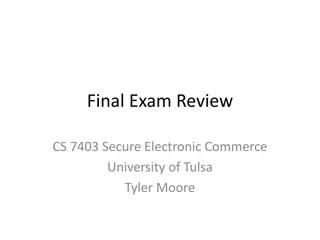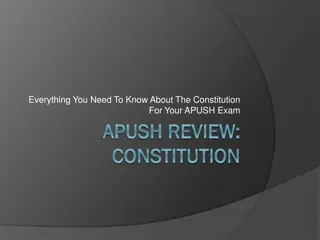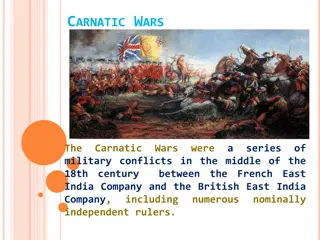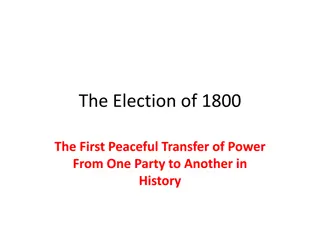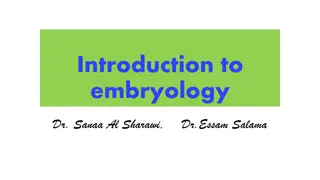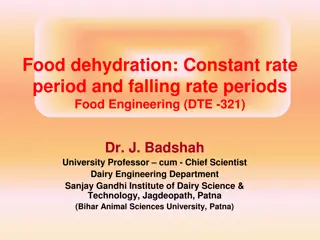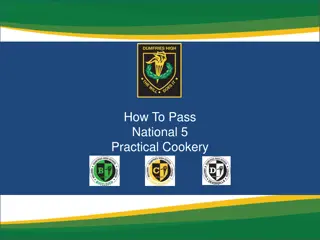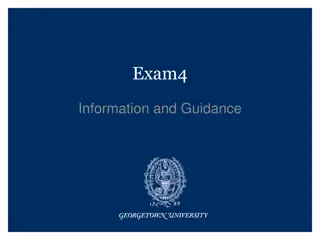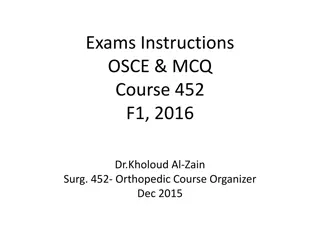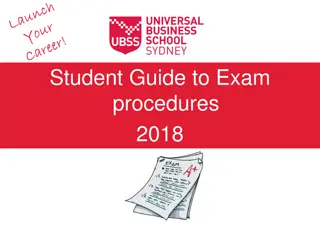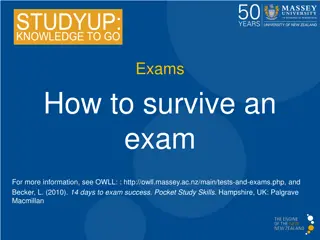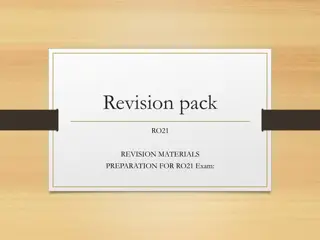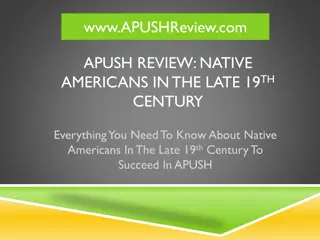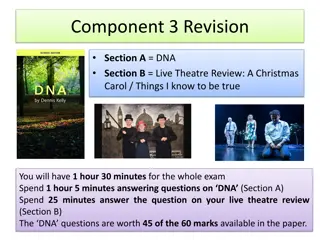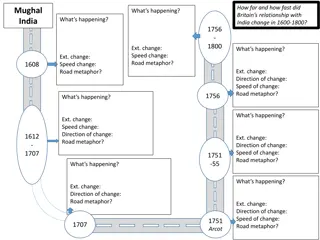APUSH Exam Review: Key Events in Periods 3 (1754-1800) & 4 (1800-1848)
Key events in Periods 3 and 4 of APUSH include the French & Indian War, American Revolution, Marshall Court decisions, Jefferson's presidency, War of 1812, 2nd Party System, and more. Explore the significant rulings, policies, and conflicts that shaped American history during these pivotal periods.
Download Presentation

Please find below an Image/Link to download the presentation.
The content on the website is provided AS IS for your information and personal use only. It may not be sold, licensed, or shared on other websites without obtaining consent from the author. Download presentation by click this link. If you encounter any issues during the download, it is possible that the publisher has removed the file from their server.
E N D
Presentation Transcript
APUSH - Exam Review Periods 4 (1800-1848) & 3 (1754-1800) Key Events 1) Period 4 Marshall Court, Jefferson s Presidency, War of 1812, Era of Good Feelings, Jackson s Admin, the 2ndParty System , 2ndGreat Awakening, 1stIndustrial Rev. 2) Period 3 French & Indian War, Build-Up to Revolution, American Revolution & Independence, Post-Revolution Issues, Constitutional Convention, Washington s Admin & the 1stParty System, Adams Admin
Two Great Online Study Resources: Gilder-Lehrman.org (excellent thematic breakdown videos, documents, etc.) Crash Course US History (10-15 min. YouTube videos on important content/thematic info from all 9 time periods)
Period 4: The Marshall Court 1) 1800: Supreme Court = last of Federalist-dominated branches of gov t 2) 1stMajor Decision (1803) Marbury v. Madison (SC decides 1798 Judiciary Act to be unconstitutional principle of judicial review established) 3) 1819: McCulloch v. Maryland (federal law trumps state law) 4) 1824: Gibbons v. Ogden (Congress CAN regulate businesses that engage in interstate commerce) 5) 1832: Worcester v. Georgia (Georgia state law could not interfere with Cherokee tribal authority)
Period 4: Jefferson s Administration 1) Elected as a strict interpreter of the Constitution & advocate of states rights ; did not always live up to these ideals 2) Louisiana Purchase buy the territory himself or risk asking Congress for permission (and missing out)? 3) Embargo Act (1807) cuts off Europe from US trade as a means to economically punish Britain/France; ends up hurting US farmers and merchants more
Period 4 Jeff s Admin (cont d) 4) Continued problems with French/British violations of US shipping neutrality during Napoleonic Wars (he avoids getting US involved) 5) Naval battles off Barbary coast in N. Africa with pirates = some greater US naval credibility
Period 4 Madison s Struggles 1) British/French trade restrictions on US continue; Madison issues an ultimatum to Britain in 1811 2) British support grows for Native American uprisings in Ohio Valley (still in dispute after Revolution) 3) Election of the War Hawks in 1810 (Clay, Calhoun, etc.) looking to gain northern/western territory and complete the business of the Revolution against Britain 4) War of 1812: divides America along sectional lines (NE. mainly against, S. mainly in favor); war ends ultimately in a draw but reinforces US pride ; manufacturing in NE begins leading to less dependence on British markets
Period 4 Monroe & Era of Good Feelings 1) War of 1812 and Hartford Convention = final destruction of Federalist party Jeffersonian-Republicans have full control 2) Battles over tariffs, expansion, slavery, and political power continue 3) Tariff of 1816 divides sectional leadership (NE/Webster against; S/Calhoun against; Clay & industrialists in favor)
Period 4 Monroe (cont d) 4) 1819: Missouri applies for statehood as a slave state ; would upset sectional balance ; Clay fashions Missouri Compromise in 1820 5) 1819: financial panic (2ndNation Bank calls in loans from state banks in hard coin specie ; leads to foreclosures and mistrust between farmers in W & S and bankers in N & E
Period 4 Monroe (cont d) 6) Foreign Affairs Monroe Doctrine is put into effect in 1823 (Europe was to stay out of W. Hemisphere where it had been removed) 7) Several land deals/border disputes settled by Sec. of State John Q. Adams (US/Canadian border, US-New Spain border, acquisition of FL)
Period 4: Expansion of Suffrage (pre-Jackson) 1) Western states give more democratic rights to common white men; pressure is put on Eastern states to do same 2) 1820: most states have adopted universal white male suffrage (no more property reqs to vote) 3) Champion of Common Man: Andrew Jackson (elected in 1828)
Period 4: Jackson (cont d) 4) Separation of economy from gov t (kills 2nd Bank, vetoes several American System bills, issues Specie Circular) 5) DOES NOT repeal Tariff of 1828 (raises import taxes to 45%); South is enraged, calls for nullification of the Tariff (states rights) 6) 1832 - Jackson gets Tariff lowered to 35%; South Car. nullifies anyway; Jackson prepares to take military force to collect $; Clay is able to get a compromise
Period 4: Jackson s Admin 7) 1830: Indian Removal Act (calls for immediate resettlement of Native Americans east of Miss. River; over 100,000 are displaced by 1835)
Period 4: 2ndGreat Awakening and Its Impact 1) Revivalist meetings all through US; called for acknowledgement of sin and repentance in order to be saved 2) Targets: alcohol, sex trade, immigrants, slave-owners 3) Abolition movement and temperance movement born 4) New religious/secular groups form communal societies based on perfection (Mormons, Shakers, Oneida Utopians) 5) Transcendentalism (going against materialism, seeking community in natural world) gains momentum among middle class 6) Women s rights movement reaches high point at Seneca Falls conference in 1848 (challenges domestic sphere )
Period 4: 1stAmerican Industrial Revolution 1) Transportation changes (steamboat, canals, turnpikes , railroads are built) 2) Southern cotton dominates the economy; makes slavery even more valuable/controversial; beginning of black codes and slave revolts 3) Northeast rises as a textile manufacturing base 4) West becomes the producer of food 5) Arrival of non-English immigrants in large amounts (Irish and Germans) US cities grow
Sample MC Questions 1stStimulus The authority given to the Supreme Court by the act establishing the judicial system of the US to issue writs of mandamus (court-issued commands to act) appears not to be warranted by the Constitution .it is emphatically the duty of the Judicial Department to say what the law is if two laws conflict with each other, the Court must decide on the operation of each the Constitution is superior to any ordinary act of the legislature; the Constitution, and not such ordinary act, must govern the case to which both laws apply. -Source: Marbury v. Madison decision, John Marshall, 1803
1stStimulus Question 1 According to this excerpt, which of the following has the supremacy in American law? A) The Supreme Court B) The Judicial Branch C) Writs of Mandamus D) The Constitution
Answer: D) The Constitution Why? Marshall has stated in this ruling that the Constitution is superior to any ordinary act of government .
1stStimulus Question 2 The section, it is emphatically the duty of the Justice Department to say what the law is would have been most strongly supported by which group? A) New England Federalists in the 1810s B) South Carolina plantation owners in the 1830s C) Kentucky legislators in the 1790s D) Southern slave owners in the 1850s
Answer: D) Southern slave owners in the 1850s Why? They would have been accepting of the Supreme Court s decision to interpret the Dred Scott decision as the Constitution acting as supreme law
Sample MC Questions 2ndStimulus The question of the relation to which the States and Federal Gov t bear to each other is not one of recent origin. From the commencement of our system, it has divided public sentiment. Even in the convention while the Constitution was struggling into existence, there were two parties as to what this relation should be The great struggle that proceeded the political revolution of 1801 turned essentially on it; and the doctrines and arguments on both sides were embodied and ably sustained on the one, in the Virginia and Kentucky Resolutions and on the other, in the replies of the legislature of Massachusetts and some of the other states. -Source: John C. Calhoun, Fort Hill Address, July 26th, 1831
2ndStimulus Question 1 Calhoun s reference to the VA and KY Resolutions embodies his belief of A) National supremacy B) Executive power C) States rights D) Judicial Review
Answer: C) States rights Why? The VA and KY resolutions promoted the idea that states could nullify a federal law if it violated their own constitutional rights.
2ndStimulus Question 2 Calhoun s sentiments in his Fort Hill Address led to what major crisis in American history? A) The Indian Removal Act B) The Nullification Crisis C) The Annexation of Texas D) Nat Turner s slave rebellion
Answer: B) The Nullification Crisis Why? Calhoun (a states rights proponent) led the charge in South Carolina to nullify the tariff of 1832; Jackson responded with the threat of military force
Period 3: French & Indian War s Significance 1) British/Colonial forces drive French from N. America; severely cripple French Indian allies ability to fight 2) Major financial expense for Britain; believe that colonies cannot defend themselves 3) Proclamation of 1763: separates colonists and Ohio Valley Indians along Allegheny mountains 4) 1765: Stamp Act is passed to fund a British military presence in colonies for defense purposes
Period 3: Reaction to Stamp Act 1) Virginia/Patrick Henry believes this is a usurpation of British civil rights guaranteed to colonists as Englishmen 2) Mass/James Otis rallies 9 of 13 colonies to meet at Stamp Act Congress in NY; sent word to King/Parliament that only colonial legislatures could tax colonists 3) Boycotts begin on British-made goods and Stamp Acts are repealed (but Declaratory Act is put in place in 1766)
Period 3: Townshend Rev. Acts (1767) 1) New taxes placed on imports 2) Mass. Circular Letter penned by Sam Adams (no distinction between external/internal taxation; called for immediate repeal) 3) Rejuvenation of boycotts lead to repeal of all taxes in 1770 (time of relative peace for next two years)
Period 3: Hostilities Reignited 1) Adams and other colonial leaders stay in touch about events regarding British policies ( committees of correspondence ) 2) Tea Act passed in 1773; Boston Tea Party takes place; British Respond with Coercive Acts (closing of Bost. Harbor, Quartering Act, Quebec Act) 3) 1774: First Continental Congress meets in Philly to discuss acceptable forms of protest; grievance list sent to King/Parliament; boycotts are stepped up 4) April/June 1775: First shots are fired; war begins
Period 3: 2ndContinental Congress and Independence 1) July 1775: Olive Branch Petition sent to King for one last chance at reconciliation; colonies are advised to arm themselves and form militias 2) January 1776: Thomas Paine publishes Common Sense (makes independence a mainstream belief) 3) June 1776: R.H. Lee presents resolution on a declaration of independence from Britain; July 2nd, the resolution is adopted
Period 3: Challenges To America During War 1) Only 1/3 of population actively supported fight for independence 2) Difficulty raising/training efficient fighting forces 3) Difficulty raising funds for war purposes (debt was only option) 4) Devastating losses during 1776-1777; key victory at Saratoga wins an alliance with France 5) Victory at Yorktown brings a peace settlement with Britain (Treaty of Paris) but Britain is far from defeated (war was too expensive, too global, Whig gov t overtakes Tory gov t)
Period 3: Governing the US After Independence 1) State governments are set up according to enlightenment principles (separation of powers, limited gov t, natural rights, etc.) 2) States are organized into a nation by Articles of Confederation (no power to tax, no power to regulate trade; established guidelines for admitting new states in territory won from Britain) 3) Challenges: debts remained unpaid, no national army, skyrocketing inflation 4) Shays s Rebellion convinces new and old political leaders that Articles needed revision
Period 3: Constitutional Convention 1) Articles are thrown out; new gov t is created 2) 3 separate branches (legis, exec., judicial) all with checks and balances 3) House and Senate (population and equal representation) for legislature ( Great Compromise ) 4) President would be indirectly elected (avoid mob rule) 5) 3/5ths Compromise would count 3 of every 5 slaves as one person toward the population of a state
Period 3: Battle Over Ratification 1) 9 of 13 states needed to ratify Constitution 2) Supporters = Federalists; Opposition = Anti- Federalists 3) VA and NY take a LOT of convincing; Federalist Papers are penned to sway state legislatures to ratify 4) Promise made to include a federal Bill of Rights after ratification
Period 3: Washington s Admin 1) Cabinet includes Jefferson (Sec of State) and Hamilton (Sec of Treas) rivals to the end 2) Hamilton = loose constructionist ; Jefferson = strict constructionist ; opinions differ over creation of National Bank; Washington usually sides with Hamiltonian faction 3) Foreign Affairs staying neutral in the renewed British-French War during the French Revolution; Jay Treaty gains British recognition of neutrality but increases US political/econ ties with former enemy (angering Jefferson faction)
Period 3: Washington s Admin (cont d) 4) Internal Affairs Whiskey Rebellion breaks out in 1794 over issues with excise taxes to pay US debts; put down by Hamilton 5) Internal Affairs US troops quell Indian rebellion by Shawnee in 1794; Treaty of Greenville cedes most of Ohio Valley to US 6) Washington s Farewell avoid foreign alliances and political parties at all costs!!!
Period 3: Adams s Administration 1) Adams = Federalist; VP Jefferson = Democratic- Republican 2) 1797: XYZ Affair Adams sends delegation to France to deal with seizure of US ships; bribes are asked for; Adams cuts off diplomatic relations 3) 1798-1800: Quasi-War is fought (naval battles between US/French fleet); Convention of 1800 ends hostilities and US-French alliance
Period 3: Adams (cont d) 4) Federalists win control of Congress in 1798 (anti- French, anti-Dem. Rep.) 5) Alien Acts passed (increased residency requirements for citizenship; gave President extraordinary power to deport enemy aliens in war/peace) 6) Sedition Acts passed (illegal to criticize President or Congress; fines and jail time punishment) 7) Jefferson and D-Rs respond with KY and VA Resolutions (call for nullification of A-S Acts)
Period 3: Election/ Revolution of 1800 1) Adams vs. Jefferson 2) D-Rs win Congress and Presidency (after a tie in the Electoral College decided by House of Reps) 3) Revolution = D-Rs are in power; power is peacefully transferred (cemented democracy s standing in world politics)
Sample MC Questions 1stStimulus One of the expedients of party to acquire influence within particular districts is to misrepresent the opinions and aims of other districts the inhabitants of our Western country have lately had a useful lesson on this head; they have seen, in the negotiation by the Executive, and in the unanimous ratification by the Senate, of the treaty with Spain decisive proof how unfounded were the suspicions propagated among them of a policy in the Federal Government and in the Atlantic States unfriendly to their interests in regard to the Mississippi; the two treaties with Britain and Spain secure to them everything they could desire, in respect to our foreign relations, toward confining their prosperity. -Source: George Washington, Farewell Address, 1796
1stStimulus Question 1 The excerpt from Washington s Farewell Address makes reference to both Jay s Treaty (with Britain - 1794) and Pinckney s Treaty (with Spain - 1795), in part for the purpose of A) Increasing the President s popularity with the people B) Encourage the development of stronger national American identity C) Discrediting criticisms of the President made by Thomas Paine D) Discouraging radical New Englanders from seceding from the Union
Answer: B) Encouraging the development of a stronger national American identity Why? Washington was appealing to settlers living in the western territories of the US that the Federal government was looking out for their best interests as it would for all Americans
1stStimulus Question 2 President Washington s references to the expedients of party and to the inhabitants of our Western country indicate that he feared that A) The Federalist Party might lose seats in the next election B) People living in the West might form a new political party C) Attacks by Native Americans might devastate frontier settlements D) Westerners regional identity might be exploited for partisan political purposes
Answer: D) Westerners regional identity might be exploited for partisan political purposes Why? Washington could see that political parties were developing and was concerned that their next target could be those living in the Western territories; he knew Westerners by nature were distrustful of centralized government and that political parties in development might try to take advantage of that mistrust for their own political gain.
Sample MC Questions 2ndStimulus Some men look at constitutions with sanctimonious (self-righteous) reverence, and deem them like the ark of the covenant, too sacred to be touched. They ascribe to the men of the preceding age a wisdom more than human, and suppose what they did to be beyond amendment But I know also, that laws and institutions must go hand-in-hand with the progress of the human mind. As that becomes more developed, more enlightened, as new discoveries are made, new truths disclosed, and manners and opinions change with the change of circumstances, institutions must advance also, and keep pace with the times. Source: Thomas Jefferson, 1816
2ndStimulus Question 1 Which of the following Amendments to the Constitution is most directly an example of the sentiments expressed above? A) The 1stAmendment, which guarantees the right to free speech B) The 10thAmendment, which allows powers not granted to the federal government be granted to the states C) The 19thAmendment, which guaranteed all women the right to vote D) The 21stAmendment, which repealed the prohibition of alcohol
Answer: D) The 21st Amendment, which repealed the prohibition of alcohol Why? After only 15 years of existence, Congress and the States passed/ratified the 21st Amendment which nullified the 18th Amendment and the concept of prohibition.
2ndStimulus Question 2 Which of the following best describes a contributing factor in the crafting the United States Constitution? A) Individual state constitutions written at the time of the Revolution gave too much power to the federal government B) The weakness of the Articles of the Confederation led many state leaders to question their efficiency C) Difficulties over trade and foreign relations led to a repeal of taxes/tariffs passed by the Confederated Congress D) Washington s embarrassing failure in the Whiskey Rebellion led Federalists to call for a new framework of centralized government
Answer: B) The weakness of the Articles of the Confederation led many state leaders to question their efficiency Why? The Articles could not tax the states, nor regulate trade, nor call up the military in case of an attempted rebellion (like Shays); it was clear by 1787 there needed to be drastic revision if the nation were to survive.



